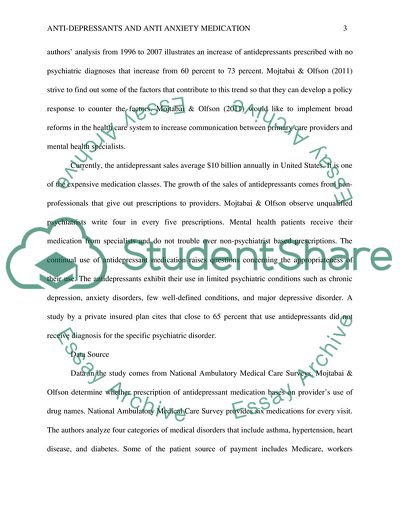Cite this document
(Anti-Depressants and Anti-Anxiety Medication Coursework Example | Topics and Well Written Essays - 2750 words, n.d.)
Anti-Depressants and Anti-Anxiety Medication Coursework Example | Topics and Well Written Essays - 2750 words. https://studentshare.org/psychology/1851069-over-prescription-of-antidepressantsanti-anxiety-medication
Anti-Depressants and Anti-Anxiety Medication Coursework Example | Topics and Well Written Essays - 2750 words. https://studentshare.org/psychology/1851069-over-prescription-of-antidepressantsanti-anxiety-medication
(Anti-Depressants and Anti-Anxiety Medication Coursework Example | Topics and Well Written Essays - 2750 Words)
Anti-Depressants and Anti-Anxiety Medication Coursework Example | Topics and Well Written Essays - 2750 Words. https://studentshare.org/psychology/1851069-over-prescription-of-antidepressantsanti-anxiety-medication.
Anti-Depressants and Anti-Anxiety Medication Coursework Example | Topics and Well Written Essays - 2750 Words. https://studentshare.org/psychology/1851069-over-prescription-of-antidepressantsanti-anxiety-medication.
“Anti-Depressants and Anti-Anxiety Medication Coursework Example | Topics and Well Written Essays - 2750 Words”. https://studentshare.org/psychology/1851069-over-prescription-of-antidepressantsanti-anxiety-medication.


